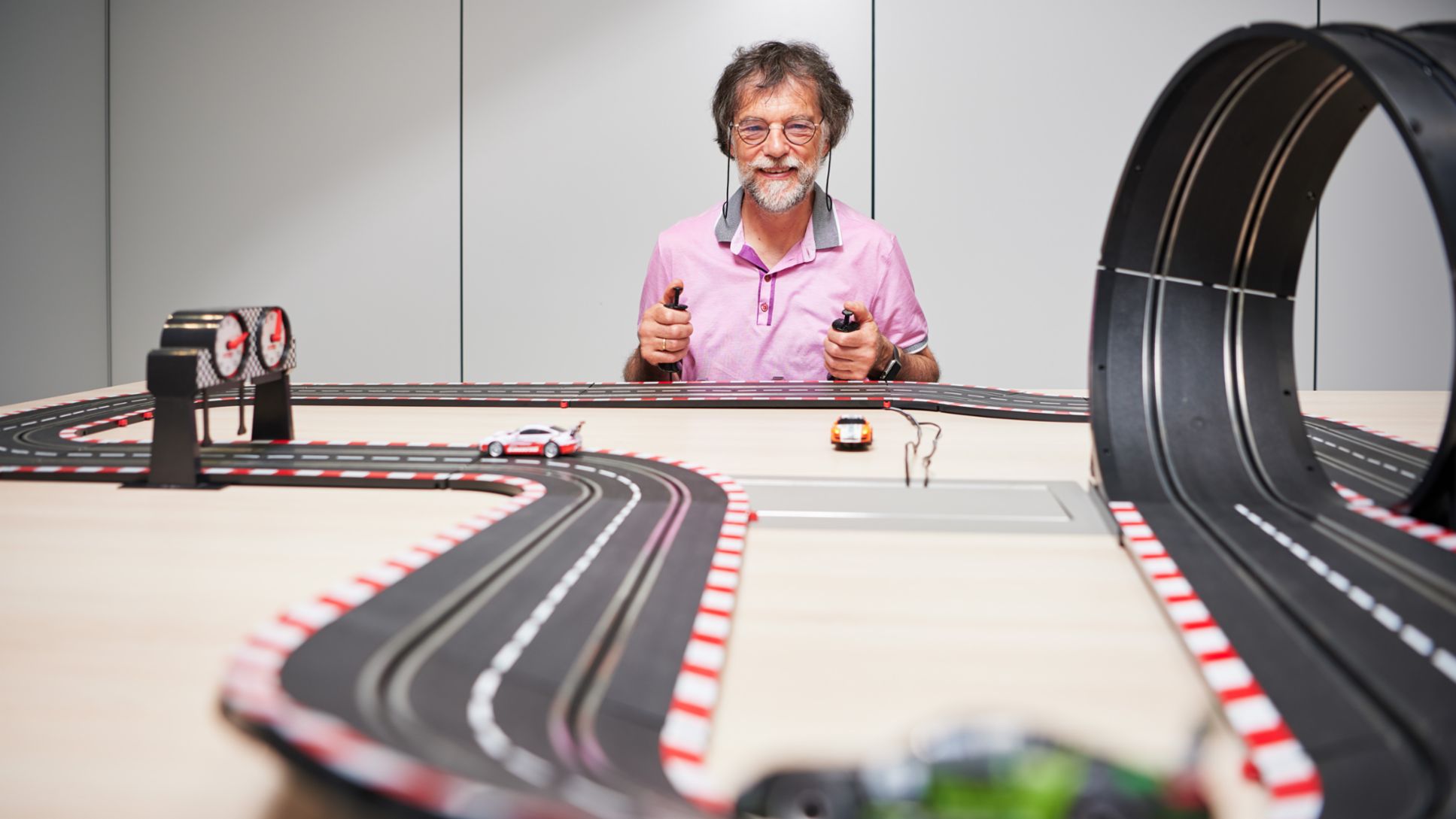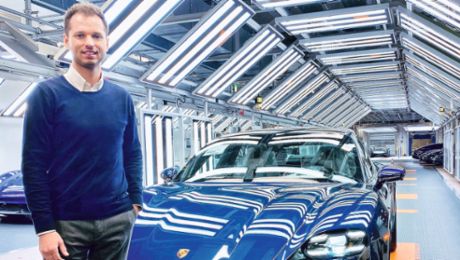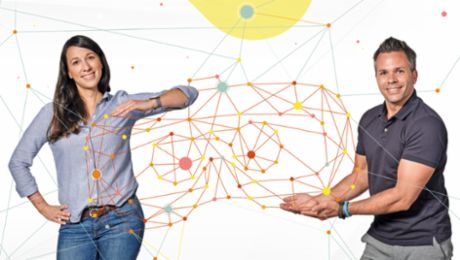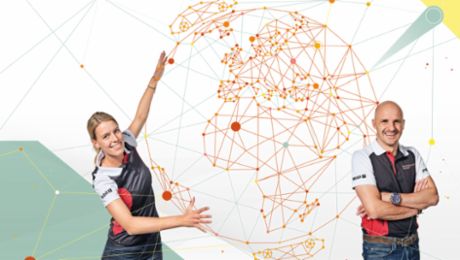Somewhere along the line, every innovation reaches a turning point. The triumphal march of cars with combustion engines took off in 1912 when Charles Kettering, a teacher from Ohio, installed an electric starter motor in place of the troublesome crank. That invention abruptly decided the head-to-head race between gasoline- and electricity-powered cars at the time. But precisely the system that was once left behind is now making a comeback. More powerful than before, more sophisticated than ever, for many people it represents the cleanest solution for the mobility needs of tomorrow. Suddenly everyone is charged up. Not only the established car makers are electrified. New players like computer manufacturers and software giants are entering the field as well. But everyone is still waiting for the crucial breakthrough, the initial spark. The milestone that enables a major revolution to emerge from the hype and the dream. The Taycan could play an important role here. Porsche’s first all-electric sports car is leading the development of electric vehicles on the road to a new era. The three individuals profiled on the next few pages—Teuta Demaili, Otmar Bitsche, and Alexander Pollich—are examples of how Porsche is charting a new course.
Electromobility is already present in many forms. Electric trains, subways, streetcars, car-sharing fleets, bicycles, and scooters are a common sight on the roads, especially in cities. For now, cars are still crucial to individual mobility. More than three million electric cars were registered around the world in 2018. While Germany accounted for “only” 36,062 of these, the United States cracked the one-million mark. And the worldwide demand for cars continues to rise. In 2010 the European Union was showing passenger transportation statistics of 6.5 billion kilometers a year. By 2030, that already huge number is expected to increase by as much as 30 percent. Around one-quarter of these kilometers are covered by car, and that will probably remain the case over the next two decades. One billion cars on the world’s roads are therefore not nearly enough. The drive system will not be the only critical factor. Charging infrastructure, battery capacity, lower weight, innovative parking models, creative services, and greater connectivity up to and including self-driving cars are megatrends, all with the aim of enabling people to choose different types of mobility for different situations. May everyone enjoy a pleasant journey!
The Veteran
Otmar Bitsche, Director of Development Electrics, Electronics, Electromobility

If you think Otmar Bitsche (62) is doing the same thing today that he did at the age of six, you wouldn’t be far off the mark. He presses the starter button. The electric motor responds within milliseconds. Torque available right from the start enables perfect acceleration before the loop and precisely dosed power before the chicane. The man at the center of all development activities related to the mega-topic of electromobility at Porsche stands at the Carrera slot car course and beams. “Yes, this is a good example of what the drive technology can do,” he says. Bitsche already put an electric car onto the roads back in 1990 with the Fiat Panda. When asked whether he is tackling what might be the biggest task in the automotive industry right now, this electrical engineer nods. “That could well be,“ he says modestly. “The great thing about Porsche is that you always have the feeling you’re not just contributing a component but that you’re an integral part of an overall strategy.”
He goes on to explain that Porsche’s decision to promote electromobility laid the foundation for a completely new strategy at the company. At the end of this year the Taycan—a lighthouse project—will go onto the market. In addition to working to expand the range, the company has consistently sought to encourage customer enthusiasm for a purely electric sports car. “We always wanted the charging process to be like fueling,” says Bitsche. “And we’ve achieved that. Increasing the voltage to 800 was what made that possible. Uncharted territory. Many people are watching closely to see if it works. It does. And amazingly well. For inductive charging, however, there are still some hurdles to overcome. “People tend to underestimate that because it’s so complex,” Bitsche remarks as he pushes the controller to full power. An excellent metaphor for the development of electromobility at Porsche.
The Newcomer
Teuta Demaili, Process planner
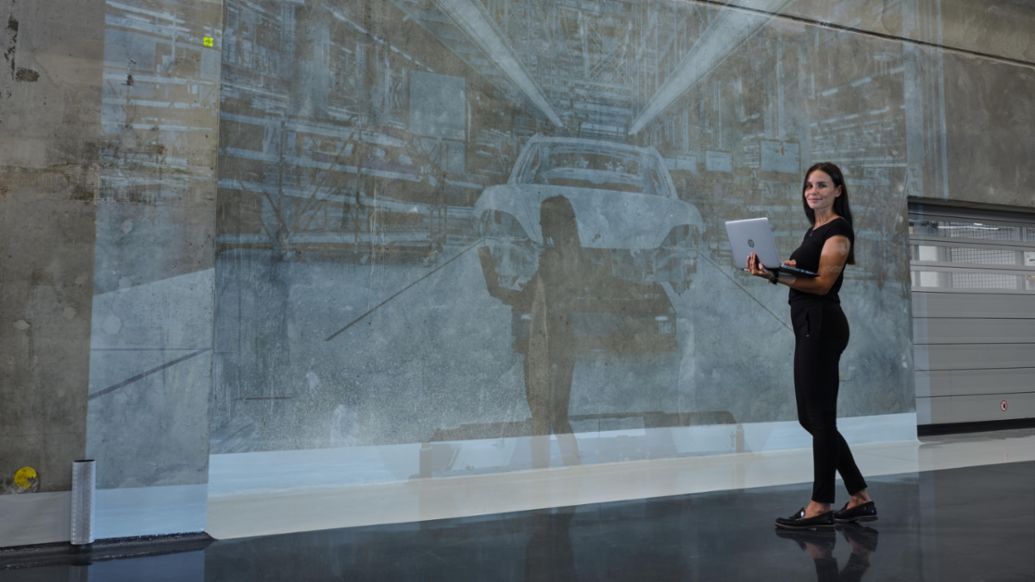
Sometimes a focus on details can obscure a view of the results. Which is why Teuta Demaili enjoys the photo session right in the middle of the production processes she helped to plan. She now has a photo of the Taycan on the wall in front of her eyes at all times. If she wants, she can also admire the first Porsche with a purely electric drive—when it rolls from the line at station 94. “It’s a privilege to work on a project like this right when I’m starting my career,” says this twenty-six-year-old who joined Porsche one and a half years ago as a process planner. She had already gathered experience with the company in internship, work/study, and bachelor programs. “This job is incredibly fun and I’m learning an enormous amount,” she says. The biggest achievement has been putting the project itself into practice at Zuffenhausen in such a short amount of time. A little over a year ago, the assembly building was just a shell when work began on installing its systems. And the first complete vehicle was already being produced there by the end of 2018.
In the meantime, every part of the Taycan production process runs flawlessly, the tools have been optimized, and the logistics are running as well. There were times during preliminary series production when Demaili could have carried out nearly every step herself. “Because of the change in product substance, we have a different assembly sequence than that for the sports cars, a complex cooling system, and the first high-voltage system in Zuffenhausen,” she explains. The assembly facilities were finished within five months. The assembly facilities were finished within five months, and various innovative solutions were found along the way. For example, the sixty-eight automated guided vehicles that transport the cars enable a high degree of flexibility. Three fully automated stations were developed, including one for the “marriage” of the drivetrain and the car body. “Sometimes I feel like a building caretaker who goes around making sure everything is running well,” she says with a smile. What counts at the end is the result. And she can hardly wait to drive that result herself very soon.
The Strategist
Alexander Pollich, CEO of Porsche Deutschland GmbH
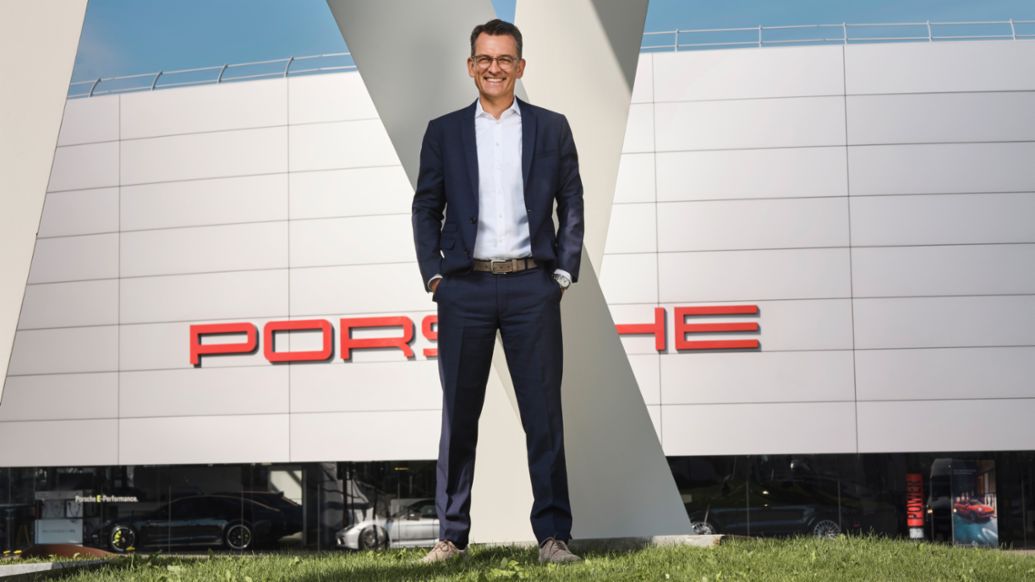
Driving the right car is how many people express their way of life. No one is more aware of this than Alexander Pollich, the CEO of Porsche Deutschland GmbH. He and his team support the eighty-eight Porsche Centers in Germany. And these centers have a very good idea of what their customers want. They are constantly selling properties like performance and passion. But with the appearance of the Taycan—the first purely electric sports car—everything will change. Or will it? “Certain things will change, of course, because the Taycan stands for a new vehicle concept,” says Pollich. “But we base our product portfolio firmly on the wishes of our customers. Which means there’s a huge amount of excitement in advance—on the part of customers, fans, and our staff.” The 20,000 people who have already expressed interest in buying the car speaks for itself, he adds, and then ventures to predict that by 2025, more than 50 percent of Porsche’s overall product range could be sold in the form of electric or hybrid vehicles.
The sales organizations are facing enormous challenges. That’s because introducing the Taycan means presenting not just a new model series but also represents a shift in strategy for the whole company. The success of electromobility will depend not only on vehicle performance, driving pleasure, and automotive design, but also on charging times and the ranges they allow. Sales staff need to be trained. As with everything else, Porsche thinks in holistic terms. The company is not only bringing an electric sports car onto the market, but also working together with partners to ensure the requisite charging infrastructure and the training programs needed for team members. Comprehensive high-speed charging systems are being installed at Porsche Centers. In order to making charging a pleasurable experience, the new “Destination Porsche” corporate architecture is turning Porsche Centers into attractive meeting points for the community. The IONITY joint venture is building a network of high-speed charging points on European freeways. And The Mobility House tech company is helping Porsche put charging options into practice in private garages. Porsche is electrified. Which actually is nothing new.
Texts by Michael Thiem
